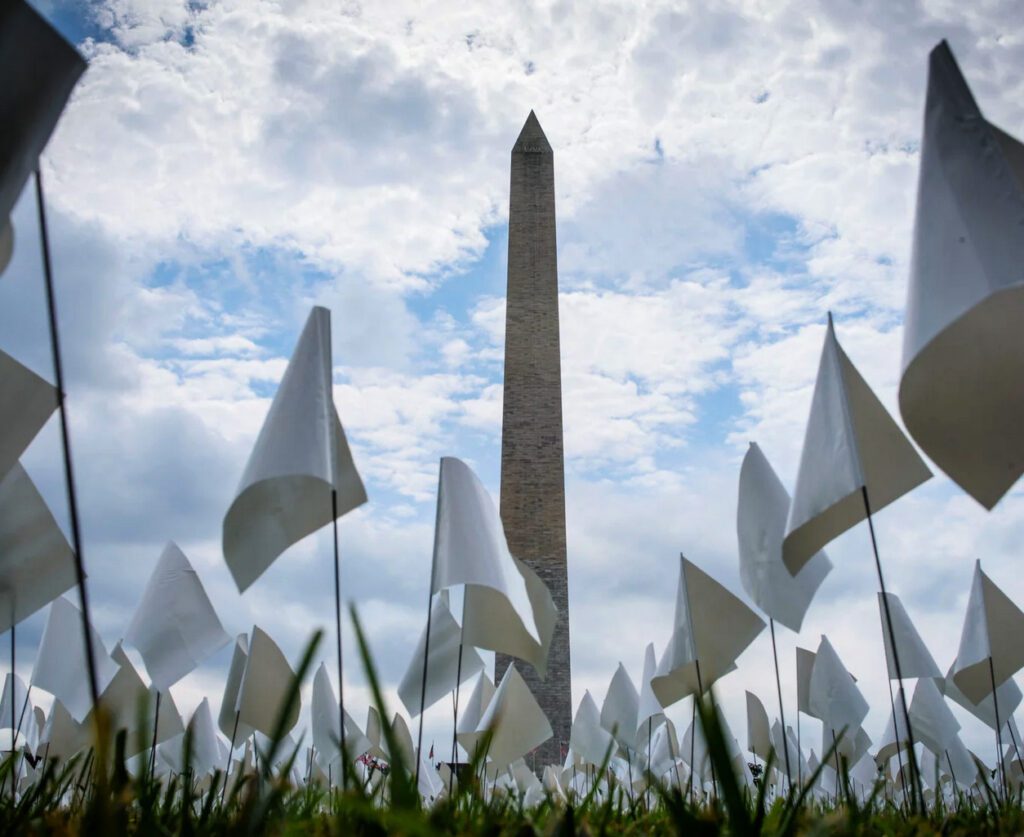 Visiting family in our nation’s capital over the weekend, we took some time to visit the Vietnam Memorial. We walked the concrete path alongside the black granite wall that honors the United States men and women who served in that 20-year war and lost their lives during their service. We pass blocks of names of the deceased–57,939 of them. We’re accompanied by family members and people we don’t know from various generations. Several veterans wearing red jackets were being pushed in wheelchairs by volunteers from a veterans’ organization. One man clearly knew several people from his division whose names were on the wall. An African American man wearing a veteran cap maneuvering his own wheelchair towards us with a skill that suggested he’d traveled that way for a long time. As he passes, people walking in our direction connect with him by saying “thank you for your service,” and he smiles. We pass a grade school age girl tracing the name of a relative onto a small piece of paper with some direction from her parents. Presumably, she will take the paper home as a keepsake and remembrance of an ancestor she has never met.
Visiting family in our nation’s capital over the weekend, we took some time to visit the Vietnam Memorial. We walked the concrete path alongside the black granite wall that honors the United States men and women who served in that 20-year war and lost their lives during their service. We pass blocks of names of the deceased–57,939 of them. We’re accompanied by family members and people we don’t know from various generations. Several veterans wearing red jackets were being pushed in wheelchairs by volunteers from a veterans’ organization. One man clearly knew several people from his division whose names were on the wall. An African American man wearing a veteran cap maneuvering his own wheelchair towards us with a skill that suggested he’d traveled that way for a long time. As he passes, people walking in our direction connect with him by saying “thank you for your service,” and he smiles. We pass a grade school age girl tracing the name of a relative onto a small piece of paper with some direction from her parents. Presumably, she will take the paper home as a keepsake and remembrance of an ancestor she has never met.We finish our walk, stop to catch our breath, and dry some tears. We share with our family members, our memories of that time. We each know people who served and came home, never to be the same again, others who left the country rather than serve in what they felt was an “unjust war,” and others who did alternative service like my own kid brother. We wonder what part this memorial has played in the 40 years since it opened in healing our country of the bitter divisions of that time.
A week or so before this visit, our country had passed the one millionth death from COVID, and people have begun calling again for a national memorial to honor the COVID19 victims. This, and my visit to the Vietnam memorial, got me thinking of the role of memorials in our life. From the perspective of our communal grief, when the losses are stunning, and the numbers staggering, we need help to fathom what has actually happened, along with ways to record and honor it. Memorials are an action that can be taken when we are overwhelmed by the scale and frequency of our losses.
Seeing the reflecting pool on the mall reminded me of how it looked in January 2021 with four hundred lanterns lit and placed around the water’s edge to honor the 400,000 people who had died by that time. In September 2021, near the Washington Monument, artist Suzanne Brennan Furstenberg created a temporary art installation, “In America Remember” using 630,000 white flags to represent the lives that had been lost by that time. The artist described her intention. “My 25 years of hospice volunteering taught me every life is valuable, no death is just a statistic.” Hearing statistics doesn’t make it real but seeing the fields of individual flags blowing in the breeze we see the extent of the human losses we have suffered individually and as a nation.
We never had a memorial for the 1918 pandemic, which many feel is part of why we were so ill prepared for this recent pandemic. A large-scale memorial can enlighten the past and clarify what we didn’t understand at the time. It can become a step-in righting wrong like The National Memorial for Peace and Justice (also known as the Lynching Memorial.) And memorials can inspire us to find a way that good can come from our losses, a way we can fashion a different future, one where what has happened will not happen again.

